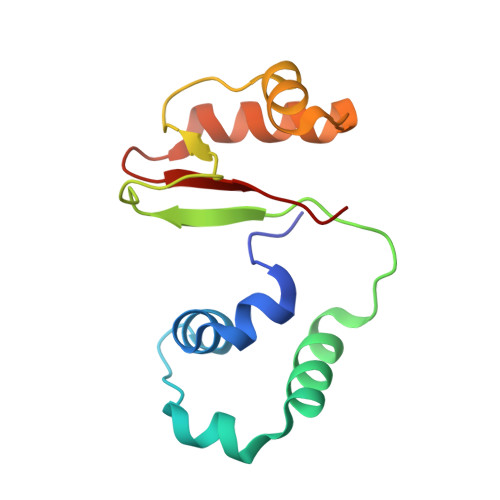The structure of AcrIE4-F7 reveals a common strategy for dual CRISPR inhibition by targeting PAM recognition sites.
Hong, S.H., Lee, G., Park, C., Koo, J., Kim, E.H., Bae, E., Suh, J.Y.(2022) Nucleic Acids Res 50: 2363-2376
- PubMed: 35166843
- DOI: https://doi.org/10.1093/nar/gkac096
- Primary Citation of Related Structures:
7VZM - PubMed Abstract:
Bacteria and archaea use the CRISPR-Cas system to fend off invasions of bacteriophages and foreign plasmids. In response, bacteriophages encode anti-CRISPR (Acr) proteins that potently inhibit host Cas proteins to suppress CRISPR-mediated immunity. AcrIE4-F7, which was isolated from Pseudomonas citronellolis, is a fused form of AcrIE4 and AcrIF7 that inhibits both type I-E and type I-F CRISPR-Cas systems. Here, we determined the structure of AcrIE4-F7 and identified its Cas target proteins. The N-terminal AcrIE4 domain adopts a novel α-helical fold that targets the PAM interaction site of the type I-E Cas8e subunit. The C-terminal AcrIF7 domain exhibits an αβ fold like native AcrIF7, which disables target DNA recognition by the PAM interaction site in the type I-F Cas8f subunit. The two Acr domains are connected by a flexible linker that allows prompt docking onto their cognate Cas8 targets. Conserved negative charges in each Acr domain are required for interaction with their Cas8 targets. Our results illustrate a common mechanism by which AcrIE4-F7 inhibits divergent CRISPR-Cas types.
Organizational Affiliation:
Department of Agricultural Biotechnology, Seoul National University, Seoul 08826, Korea.














